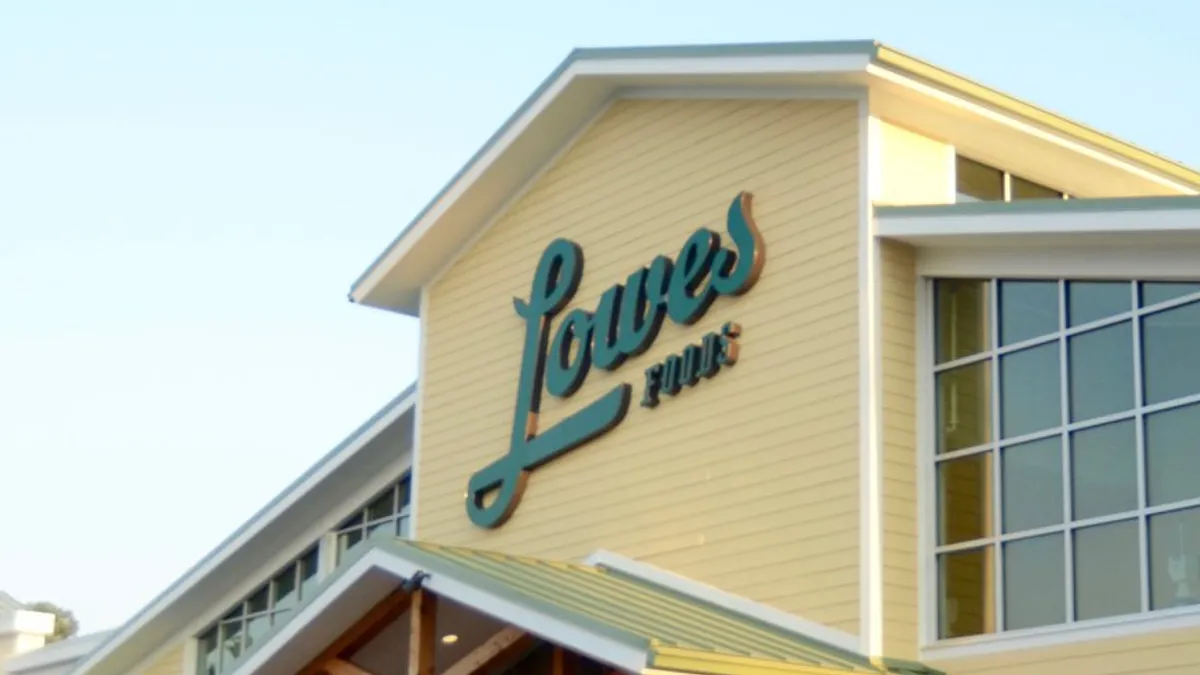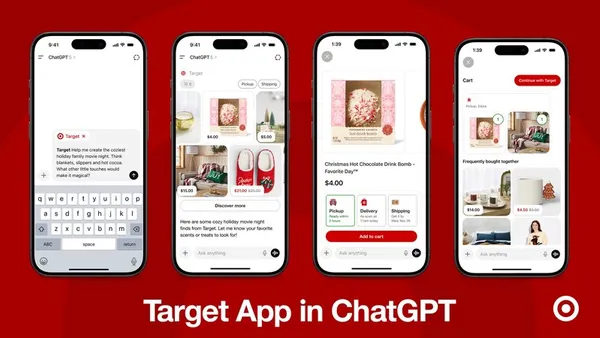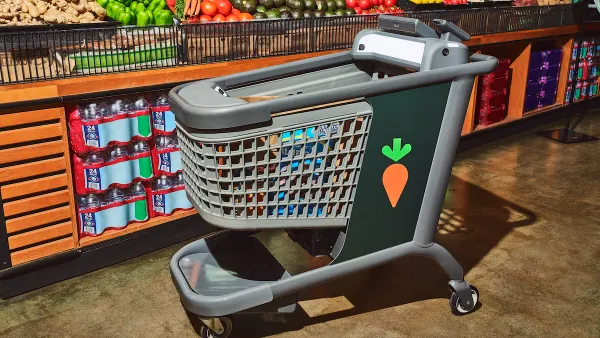Dive Brief:
- Lowes Foods has integrated fulfillment technology that orchestrates deliveries across various last-mile firms, helping it better organize service according to store and shopper needs, according to a press release on Thursday.
- The technology, provided by Plano, Texas-based Delivery Solutions, also unifies shopper tools and communication, and brings the delivery experience fully under Lowes Foods branding, said Chad Petersen, the chain’s vice president of e-commerce.
- The partnership reflects the push by regional grocers to streamline e-commerce technology and the front-end experience as services like delivery and pickup account for an ever greater portion of sales.
Dive Insight:
Lowes Foods does most of its e-commerce business in pickup — a channel where it’s tried to stand out through technology like geofencing as well as attentive customer service. But delivery has come on strong during the pandemic, as well, Petersen said, pushing the company to integrate with various regional and national third-party logistics firms.
Those last-mile partners, including Shipt and DoorDash, have allowed Lowes to scale its same-day delivery program in line with demand. However, shopper communication has been fragmented, with customers receiving delivery updates from whichever firm handled their order. Lowes wanted to unify that experience, make the dispatch process more efficient and bring everything under its own branding.
“We really had to kind of grow up in how we were architecting our systems, because the [third-party logistics] landscape is changing,” Petersen said.
The orchestration technology from Delivery Solutions links with each of Lowes’ providers and assigns orders based on their capabilities, as well as the requirements of each store and order. It “singularizes” the experience for customers, Petersen noted, with services ranging from order tracking to customers receiving pictures of completed deliveries coming through Lowes’ branding and systems. It can also work across a variety of functions and services, including point-to-point as well as batched deliveries and unique services like locker delivery.
Orchestration technology can improve unit economics in e-commerce by matching each order with the right provider, said Arshaad Mirza, Delivery Solutions’ founder, and helps “insulate” retailers from having to adjust to changes across the delivery landscape, from mergers to technology updates.
Lowes’ update underscores the growing technology requirements retailers face in online grocery. It also highlights the drive by grocers of all sizes to win over branding control and customer data in an e-commerce realm where Instacart, DoorDash and Uber serve as the digital storefront for millions of food shoppers. Regional grocers like Lowes don’t have the capital to invest in a deep bench of tech personnel, said Petersen, making it imperative for retailers to forge strategic partnerships that don’t overtax profitability in what’s mostly an unprofitable service.
Looking ahead, Petersen said Lowes and other grocers are examining ways to offer a variety of delivery options that vary according to speed and pricing. Many shoppers, he said, don’t need their groceries as quickly as possible.
"I think everybody in the industry clamored to do one-hour delivery, but that's not what the general audience out there is wanting all the time,” he said. “So I think having flexibility to accommodate testing of different services is going to be important, not just for Lowes but I think for the industry as a whole."













